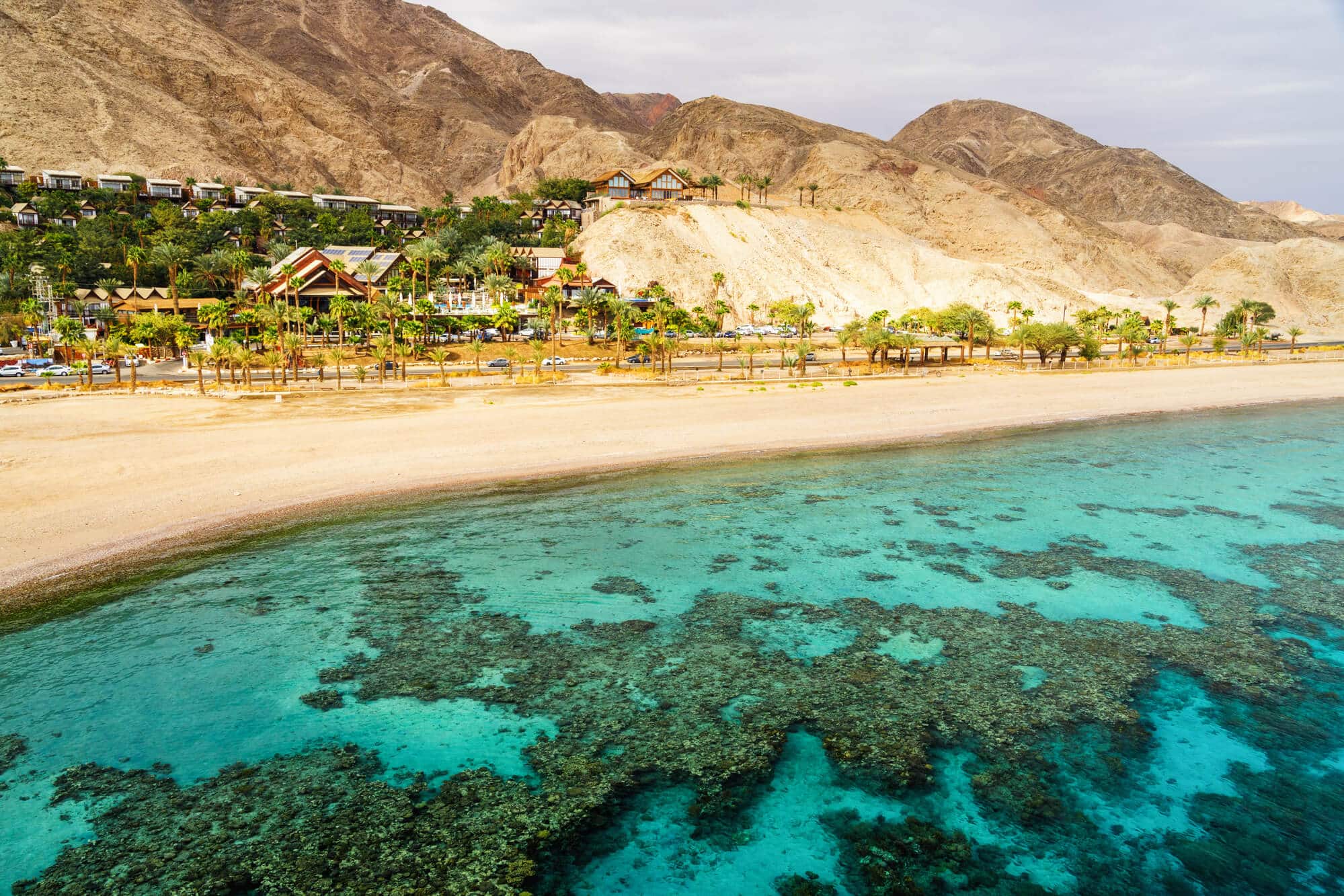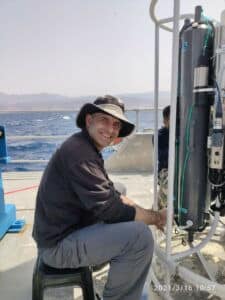How growth of the mineral calcium carbonate affects the carbon dioxide cycle in the waters of the Bay of Eilat, and thus the ecosystem and climate warming

The oceans can absorb heat from the atmosphere as well as exchange gases with it (absorb them from it and emit them to it). Thus, in the deep waters of the oceans there is a considerable amount of greenhouse gases, including carbon dioxide (CO2) which is known to contribute to global warming. The concentration of carbon on Earth is expected to continue to rise mainly due to the burning of fossil fuels such as coal and oil, which affects the warming of the oceans and the atmosphere.
"Carbon exists in the ocean in almost all possible states of accumulation - gas, dissolved, solid (limestone) and as organic matter, inside marine animals - and therefore it is related to a variety of processes that take place in it," says Dr. Eyal Wargaft, a chemist and lecturer in the field of earth sciences at the university the open. Dr. Wargaft studies chemical processes in the ocean and thus learns about it and the environment. He focuses on the relationship between the oceanic carbon cycle and the geological carbon cycle and how human activity such as burning fossil fuels affects the carbon cycle and the ecosystem as a whole.
What is the question? How much calcium carbonate is formed in ocean water?
"Most of the limestone rocks in Israel, which are tens of millions of years old, were formed by marine animals such as corals and microscopic creatures, including coccolithophorids and foraminifera," he says. "These animals make a calcareous skeleton for themselves from the calcium carbonate mineral that is created from the carbon found in the ocean and accumulates in their body. When they die, the skeleton sinks to the bottom of the ocean, accumulates there, and over the years hardens and turns into rock. Burning fossil fuels causes a huge emission of carbon dioxide and thus causes a tremendous change in the chemistry of the ocean; The carbon is emitted into the air, from there it passes into the ocean as a gas and then chemically reacts with water. This process increases the acidity of the sea water and causes the calcium carbonate to dissolve. Thus, marine animals find it difficult to build a skeleton for themselves and survive, which harms the ecosystem and humanity. Thus, for example, the construction of coral reefs is damaged, which provide a home for more than a quarter of the animal species in the oceans and, among other things, are a major source of photosynthesis in the sea (which contributes to the production of oxygen that we breathe a large part of)".
However, when the calcium carbonate is added to the sea (and also to the rivers) from the limestone rocks in them, more calcium carbonate grows on it and the deficiency is reduced; Calcium atoms and carbon molecules are attached to it, so that crystals form from it. In Dr. Wargaft's latest research, done with the student Gili Edwardson, the effect of the calcium carbonate growing process on the carbon cycle in the Bay of Eilat was examined; The researchers wanted to check how much carbon moves from the surface water to the deep water of the bay following the increase in the amount of calcium carbonate.
"Half of the carbon generated from burning fossil fuels accumulates in the ocean and not in the atmosphere. Thus the ocean slightly reduces the warming of the climate and protects us. Its ability to do this depends on the chemistry of the carbon cycle, so we want to know all the processes that affect it, and one of them is the growth of calcium carbonate in the ocean," explains Dr. Wargaft.
For the purpose of their research, which was awarded a grant from the National Science Foundation, the researchers sampled water and solid materials such as mud and dust from the bottom of the Bay of Eilat. After that, in the laboratory, the solid materials were suspended in water, they examined the changes created in the carbon system and deduced how much calcium carbonate grew on top of the materials. This is done through three chemical parameters: the concentration of the carbon dissolved in the water, alkalinity (the benchmark for the ability of an aqueous solution to neutralize acidity), and the isotopic composition of the carbon in the various materials. Now they know for sure that any solid material they suspend in the water taken from the Gulf of Eilat causes the deposition of calcium carbonate and are trying to understand to what extent.
The goal is to discover the increase in the amount of calcium carbonate in the water. This way we will know if this is an important process in the Gulf of Eilat, and later we will be able to understand how important it is also in the Mediterranean Sea and the Atlantic Ocean.
"Ultimately, the goal is to discover the increase in the amount of calcium carbonate in the water. This way we will know if this is an important process in the Gulf of Eilat, and later we will be able to understand how important it is also in the Mediterranean Sea and the Atlantic Ocean. On the one hand, calcium carbonate is necessary for the construction of the skeleton of marine animals and the entire ecosystem. On the other hand, its increased growth changes the chemistry of the carbon. In this way, the dissolution of carbon in water decreases, and it remains longer in the atmosphere, which may affect global warming," concludes Dr. Wargaft.
Life itself:

Dr. Eyal Wargaft, 43, married + two (11, 7), lives in Shoava settlement. In his free time he likes to spend time with his children and wife, listen to music, play the guitar, practice yoga, read and go to the beach.
More of the topic in Hayadan:
